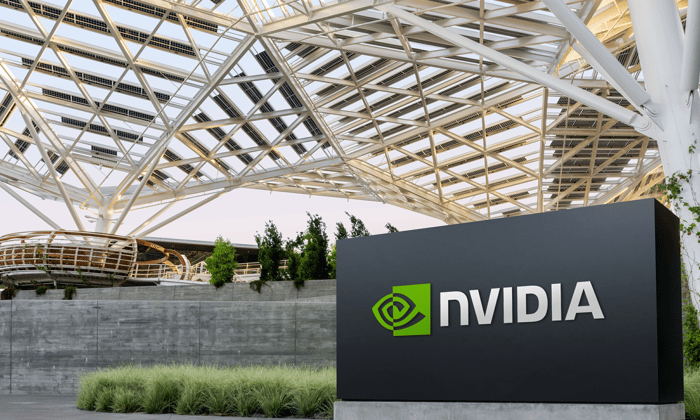The S&P 500 (^GSPC 0.53%) has produced phenomenal returns over the last two and a half years since the bottom of the 2022 bear market. The index is up nearly 70% since Oct. 2022, but much of that gain has been driven by just a handful of stocks. The "Magnificent Seven" have, for the most part, outperformed the benchmark over that period, and there's a clear reason why.
As a group, the Magnificent Seven have produced much better earnings growth than the rest of the S&P 500. Not only that, they've consistently beaten high earnings expectations. That trend continued in the first quarter, but analysts are starting to think their phenomenal run of outperforming everything else in the market may come to an end soon.
Here's what investors need to know.

Image source: Nvidia.
A strong first-quarter performance
After Nvidia (NVDA 0.86%) released its quarterly earnings on May 28, FactSet reported the Magnificent Seven grew earnings 27.7% in aggregate. That massively outperformed analysts' expectations of 16.0% earnings growth for the group. Here's how it breaks down:
- Amazon (AMZN -0.61%): $1.59 earnings per share (EPS) vs. $1.36 expected, up 62% year over year.
- Alphabet (GOOG 0.86%) (GOOGL 0.82%): $2.81 EPS vs. $2.01 expected, up 49% year over year.
- Meta Platforms: $6.43 EPS vs. $5.22 expected, up 37% year over year.
- Nvidia: $0.81 EPS vs. $0.75 expected, up 33% year over year.
- Microsoft: $3.46 EPS vs. $3.22 expected, up 18% year over year.
- Apple: $1.65 EPS vs. $1.62 expected, up 8% year over year.
- Tesla (TSLA 2.58%): $0.27 EPS vs. $0.41 expected, down 40% year over year.
Six out of the seven outperformed expectations, and five of them grew earnings faster than the other 493 companies in the S&P 500 (9.4%). But as you can see, the level of outperformance and year-over-year growth varies widely from company to company.
The weakest showing was most obviously from Tesla, which has suffered from political backlash against CEO Elon Musk, combined with rising competition from Chinese automaker BYD. As a result, deliveries dropped 13% year over year in the first quarter while average selling price also declined. The company's ramp-up in AI spending to support its forthcoming autonomous vehicle efforts also weighed on earnings results.
On the other side of the spectrum, Amazon and Alphabet exhibited impressive earnings growth on the back of their cloud-computing businesses. Amazon Web Services grew sales 17% year over year, while its margin expanded to 39.5% (up from 37.6% a year ago). Google Cloud grew sales 28% with its operating margin expanding to 17.8% from 9.4% a year ago. The high-margin Google advertising business continued to produce strong growth as well.
Nvidia felt the pain of restrictions on sales of its GPUs to China, but the company still managed to produce very strong earnings growth last quarter. Without the impact of the write-off in excess inventory and purchase obligations of its H20 GPUs designed for China and the related tax impact, earnings growth would have been 57% .
When the Magnificent Seven could come back down to earth
Though Tesla is the only one showing weakness at the moment, the rest of the group's outperformance isn't going to last forever.
While analysts expect the group to continue beating the rest of the market in terms of earnings growth through the end of 2025, difficult comparisons and better performance among the rest of the stocks in the S&P 500 could present a challenge for 2026. As such, analysts currently forecast first-quarter 2026 earnings growth of 10.2% for the Magnificent Seven as a group, but the rest of the 493 companies will generate an average of 10.3% earnings growth.
That forecast has some important implications for investors, even if it ultimately proves inaccurate (as is almost always the case for forecasts a year out).
The first is investors will need to be more discriminating among the seven stocks going forward. We've already seen Tesla stock falter, and Apple, despite beating expectations, has seen its stock hit hard by tariff pressure. Even if investors expect strong results from one of the businesses going forward, valuation will matter more as earnings growth slows down. Alphabet is currently the only member of the group with a forward price-to-earnings ratio below 25 (it sports an extremely attractive 18.5x multiple).
The second is that there may be a lot more growth opportunities among the smaller members of the S&P 500. While analysts expect growth for the group to continue trailing the Magnificent Seven through the end of the year, that won't be true of every company. It's possible to find those companies trading at a fair value despite strong growth prospects outside of the Magnificent Seven.
Another option is to buy an equal-weight S&P 500 index fund like the Invesco S&P 500 Equal Weight ETF (RSP 0.51%). The fund invests evenly across all 500 constituents of the S&P 500, rebalancing on a quarterly basis. That ensures you capture just as much upside from smaller businesses as you do from the biggest companies in the index.
As the tide turns and we start to see more parity in the market, investors should expect a stronger showing over the next year (or longer) from smaller names in the stock market. Meanwhile, many of the Magnificent Seven are starting to look expensive relative to their future earnings growth prospects as analysts' expectations come down. It may be worth selling off some to invest in new opportunities.





